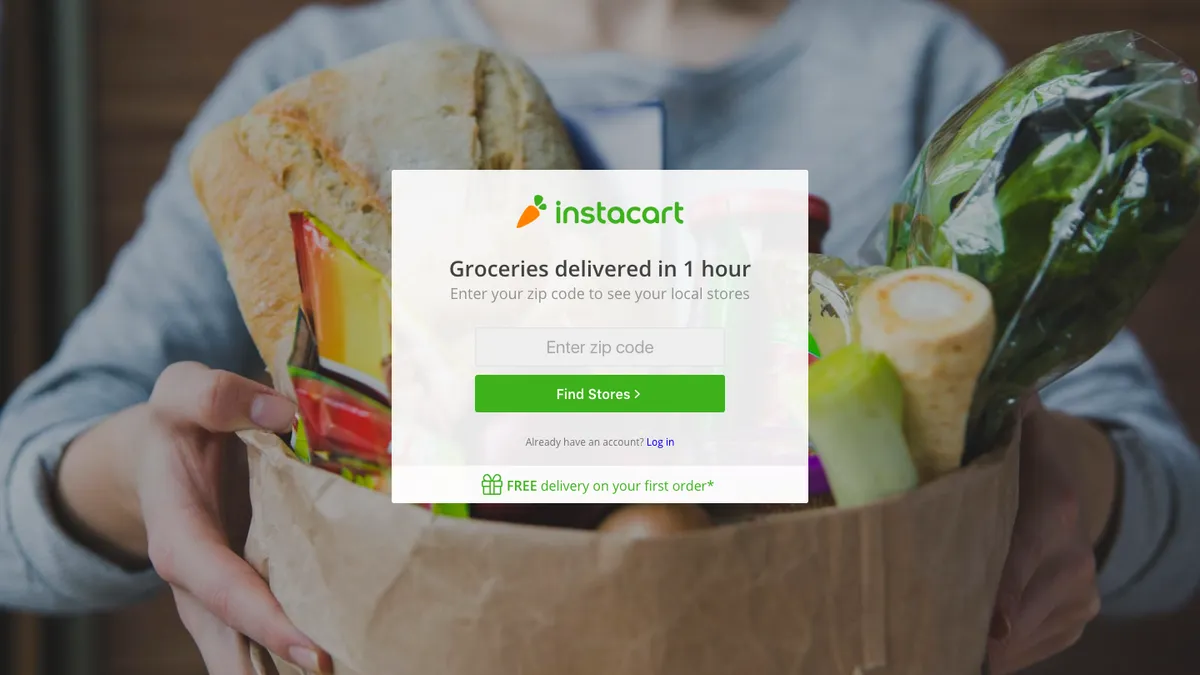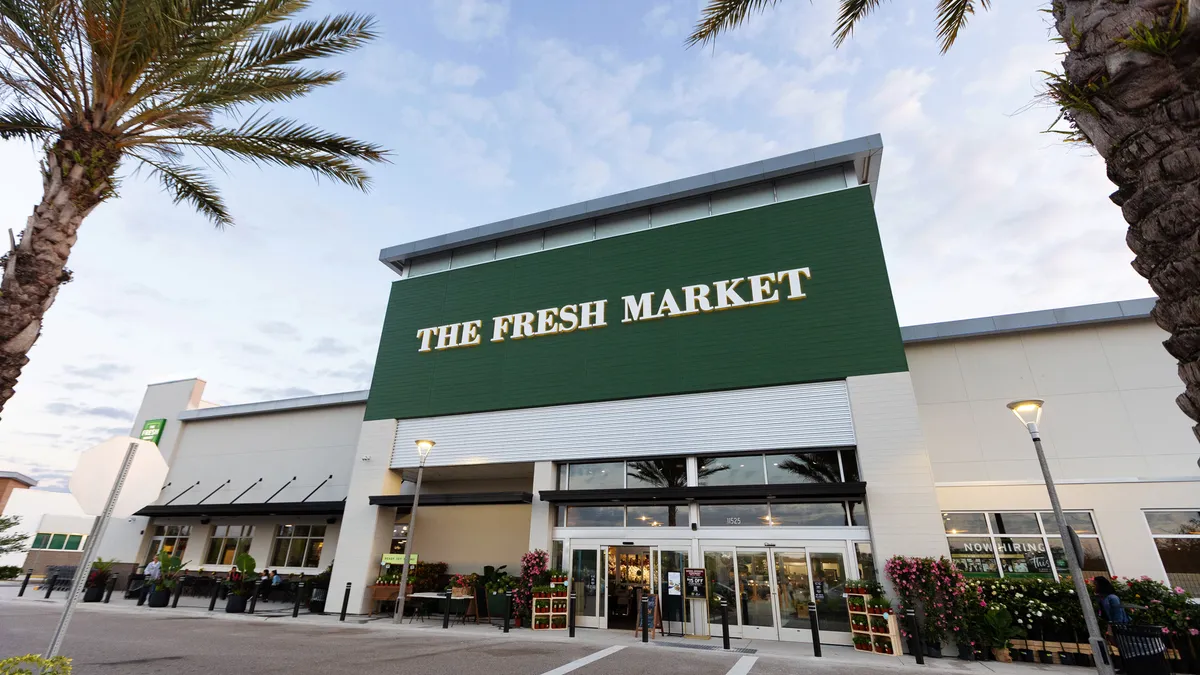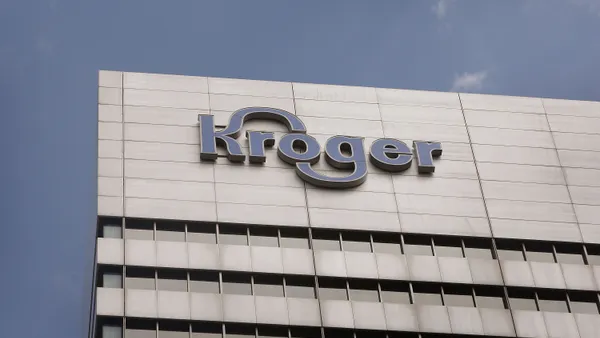The surging online orders that have been powering grocery sales throughout the pandemic have elevated a long-simmering conundrum for the supermarket industry.
Hundreds of food retailers now partner with e-commerce fulfillment companies like Instacart and Shipt to manage the logistics of their delivery and pickup services. But in offloading those operations to third parties, grocers have also outsourced much of the customer experience. They're also ceding control of valuable data about online shopping behavior.
Grocers want to have more operational control over the orders that have been flooding into their stores, industry observers say. Yet even for retailers with the resources to manage e-commerce themselves, it is difficult to ignore the profound impact independent e-commerce providers, especially Instacart, are having on the grocery industry, said Nick Shields, a retail industry analyst with the investment research firm Third Bridge.
"Instacart generates so much traffic and online has grown so much since the pandemic [began] that you simply have to be there to capture that customer base," said Shields. "Simply put, these grocers are willing to give up control of the customer experience and the data that they may gather just to capture those customers because it’s a necessity for them."
Instacart's ability to draw grocery customers and quickly scale up its contract worker model has played a key role in helping it secure its dominant position in grocery e-commerce. The company has added millions of new customers during the pandemic, and struck key retailer partnerships as chains look to add delivery and pickup services to growing numbers of stores. Meanwhile, well-heeled delivery companies Uber Eats and DoorDash, which have focused primarily on restaurants, have recently started angling for a share of the grocery-delivery pie.
Uber entered grocery e-commerce earlier this year following its acquisition of Cornershop, a Chilean online grocery service. The company launched services in Dallas and Miami in July, and said in September that it would offer delivery from supermarkets in Florida operated by Southeastern Grocers under the Winn-Dixie and Fresco y Más banners. On Oct. 28, Uber said it has started offering delivery service from grocers in Manhattan, including Gristedes, Westside Market and D'Agostino and intends to expand to other parts of New York during the coming months.
DoorDash announced in August that it was adding grocery delivery to its app, giving consumers access to delivery service from chains including Smart & Final, Meijer and Fresh Thyme Market. DoorDash also offers delivery service from convenience stores like Casey’s, 7-Eleven, Circle K and Wawa.
"Instacart generates so much traffic and online has grown so much since the pandemic [began] that you simply have to be there to capture that customer base."
Nick Shields
Analyst, Third Bridge
Outsourcing may be the best option
Aside from their role in attracting customers, third-party e-commerce providers may be the best, if not only, option for retailers with limited resources to provide delivery services to their customers given the complexity of doing it independently, said Neil Saunders, managing director of GlobalData Retail.
"I think if you’re a smaller retailer that a third-party partnership … is often very attractive because building your own delivery function is expensive," Saunders said. "The downside to it is that you really lose control. Sometimes there are price differentials on the Instacart side, you obviously don't have control over the customer service levels that are delivered, and you don't have control over the staff that are doing the picking."
The costs that accompany e-commerce are a particularly compelling reason for retailers to partner with a fulfillment customer rather than try to build their own service, said Kurt Jetta, executive chairman and founder of TABS Analytics.
"There's not a pricing model yet that's covering the cost of service, so somebody is subsidizing it. So the way I would look at it as a retailer is how do I limit the downside, and that would be to use a third-party service like Instacart," said Jetta.
Instacart has recorded rapid growth in 2020. The company has added hundreds of thousands of shoppers to its workforce, and said in August that demand for its service was up 500% compared with the levels it saw a year earlier.
Many small-scale retailers have been forced to establish online services over the past several months, utilizing services like Mercato and Rosie that cater to independent grocers. These services provide back-end software and can link retailers with last-mile companies for delivery.
In May, Target, which owns Shipt, said its sales through the service grew 300% year-over-year. Meanwhile, Rosie announced in July that the number of stores it works with had increased 900% since the start of the pandemic.
Having it both ways
For some supermarket chains, the solution lies in controlling more of the operations and customer experience, but still using a third-party service where it makes sense to do so.
Sprouts Farmers Markets, for example, recently began accepting online orders directly through its website even as it continues to court business through Instacart's platform. The natural foods grocer uses Instacart's order-management technology as part of its e-commerce platform, but gains insight and control over the customer experience.
The arrangement allows the retailer to "keep people in our own ecosystem who just want to experience Sprouts," Denise Paulonis, chief financial officer of Sprouts, said recently during the company's third-quarter earnings call. "But we also don't lose the benefit of a good partnership with Instacart and good traffic to an Instacart site where people are just looking for that convenience every day. So now what we're really able to offer folks is a choice between them that they can make that we don't need to make for them."
Sprouts also has sought to differentiate itself by using its own store employees to pick and pack orders instead of delegating that task to gig workers from Instacart, although it still relies on those workers to handle deliveries.
Kroger also takes a hybrid approach that allows it to bring in sales from consumers who want to shop through Instacart while still driving e-commerce business through its own websites.
"We think that's important, because we really do see the value in owning the overall relationship and creating a seamless experience," Kroger Chief Financial Officer Gary Millerchip said during an investor update last week. Millerchip noted that the bulk of Kroger's online sales are coming through its own app and website.
For its part, Instacart says it has no interest in standing in the way of the grocers it works with, and instead wants to help them flourish.
"We don't just want sales to happen on Instacart. We want to build websites for grocers, we want to build apps for grocers, and that's not something you would do if you wanted to compete with your partners," the company's president, Nilam Ganenthiran, said in a recent interview. "We're here to serve this specific industry for the long term and we think the best way to do that is in partnership, not in competition."
Gregg Dorazio, e-commerce lead for Giant Food, which runs its own delivery service in addition to working with Instacart, said the 164-store grocer looks to its Instacart relationship to service its most time-sensitive customers, but sees its in-house e-commerce operation as central to maintaining its brand.
“Instacart offers an important part of the channel puzzle for us, which is that real immediate need for rush delivery. Their strength is in that one- to two-hour turnaround time, and I look at that as more of a premium service … their app and their technology is built for that,” Dorazio said.
Working with Instacart also gives Giant access to customers who are inclined to turn to the e-commerce company when they order groceries — and who they might otherwise miss — Dorazio said.
"A real benefit of having them as part of our total offering is they are a marketplace. So they're out there marketing themselves as a portal of many retailers, and I liken it almost to how a hotel or airline might be selling out on Tripadvisor or Expedia or Hotels.com," he said. "They do have eyeballs, they do have some scale in bringing customers to that marketplace. And for that reason, I think it's an important piece for us to be able to offer our products and our brand in that channel as well."
When it comes to drawing on the brand equity Giant has developed in the mid-Atlantic market where it has operated for more than 80 years, however, there is no substitute for the company’s own delivery service, Giant Delivers, Dorazio said. That service, formerly known as Peapod by Giant, is staffed by Giant employees and allows the company to differentiate its service and build loyalty with customers by adding personal touches.
"The drivers get to know if people [want deliveries] to the front door or the back door or the garage, if someone needs extra service ... or if it might be somebody’s birthday or if there are children in the household," Dorazio said. "There's all kinds of insights that we gather and build up over time by having that more personalized relationship, through our drivers, through our trained staff, and on the back-end side with customer service."
Going it alone doesn't have to mean operating on your own
The interest among some retailers in running in-house delivery services has boosted the market for technology that can help simplify the process of managing a squad of drivers.
Onfleet, a San Francisco-based company that offers software designed to route incoming orders, track drivers and communicate with customers, has seen strong interest in its technology this year as retailers in a host of industries opt to maintain control of their e-commerce operations, said co-founder and CEO Khaled Naim.
"There's all kinds of insights that we gather and build up over time by having that more personalized relationship, through our drivers, through our trained staff, and on the back-end side with customer service."

Gregg Dorazio
E-commerce lead, Giant Food
Retailers across a broad range of industries have signed on to use Onfleet's software as they have sought to maintain control of their delivery services, said Naim, whose company counts grocers like Kroger, Foxtrot Market, United Supermarkets and Imperfect Foods among its customers.
"We remove a little bit of that barrier to entry, which has a lot of retailers going to the Instacarts and Shipts of the world because it's a daunting thing to build an in-house operation," said Naim.
Ashwin Cheriyan, CEO of Thistle, a meal-delivery company that uses Onfleet's technology to manage a fleet of hundreds of drivers in cities along the West Coast, said he chose to bring delivery operations in-house after trying for several years to work with an outside provider.
Moving delivery under the company's control has helped Thistle enhance its brand and gather analytics about the performance of its drivers — all of whom are on its payroll but provide their own vehicles — enabling the company to improve its business, according to Cheriyan.
"When we were working with third-party logistics companies, the quality of the service was relatively variable. And that meant some customers had a good experience, some customers got a less good experience. And in our case, if your delivery is five minutes late, that is considered a bad experience," Cheriyan said. "The only way that we found to maintain consistency and service was to make sure that we built the fleet in house."
Jeff Wells contributed reporting to this story.















